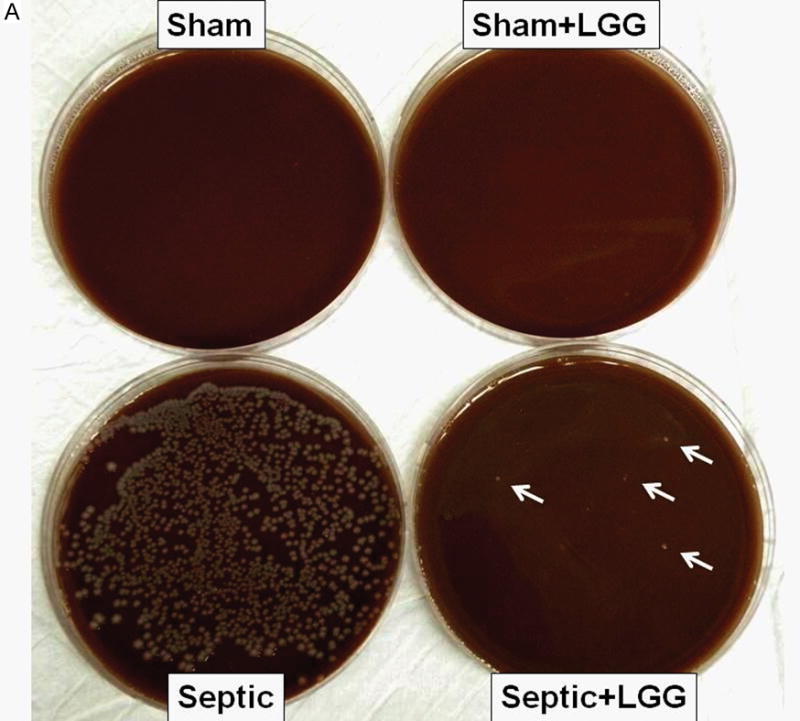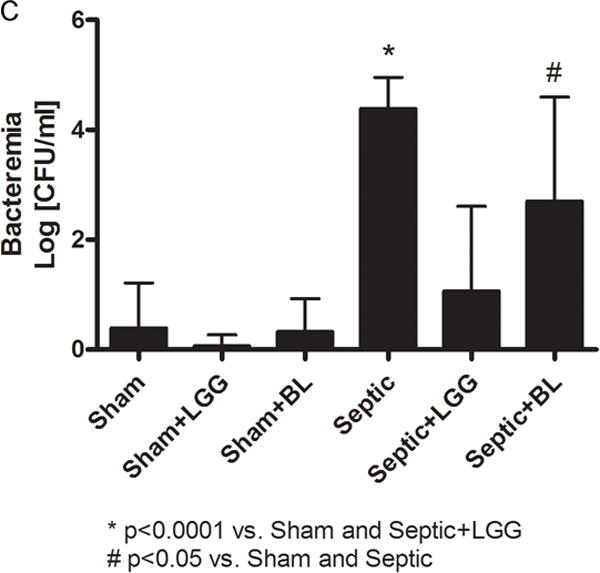Figure 2. Effect of Lactobacillus rhamnosus GG and Bifidobacterium longum treatment on bacteremia in sepsis.



Bacterial growth on representative Trypticase soy agar plates with sheep blood (5%) are shown for each experimental group (A, B). Septic mice had increased bacteremia (C) compared to shams (4.39 ± 0.56 vs. 0.40 ± 0.81; p = 0.0001), while septic mice treated with Lactobacillus rhamnosus GG (LGG) or Bifidobacterium longum (BL) had reduced bacterial load in the blood (1.07 ± 1.54; p = 0.0001 and 2.70 ± 1.89; p = 0.016, respectively). Shams n = 8 per group; Septic n = 10; LGG n = 7; BL n = 8. Data are expressed as the mean ± SD.
